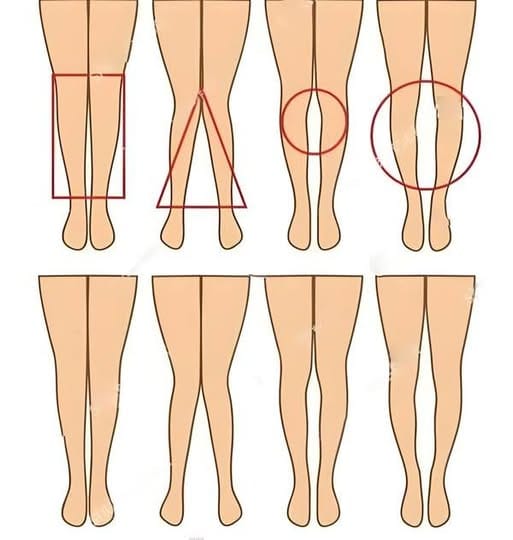Why Do Women Cross Their Legs While Sitting? Unveiling the Psychological, Cultural, and Social Factors
The Significance of Crossing Legs: A Deep Dive into the Cultural, Social, and Psychological Influences on Women’s Posture
The act of crossing one’s legs while sitting is more than just a personal choice—it’s a behavior woven into the fabric of cultural, social, and historical contexts. For centuries, societal norms and expectations about female posture have shaped how women present themselves in public. In many cultures, crossing one’s legs is seen as a symbol of modesty and elegance, an outward display of femininity that reflects grace and decorum.
Historically, the way women sat was often a subject of scrutiny and regulation. Take 18th-century Europe, for instance, where art and literature idealized a particular posture that was considered elegant, refined, and demure. However, these norms were not universally accepted. In Eastern cultures, crossing one’s legs could be interpreted as a sign of disrespect or disdain, underscoring how crucial cultural context is in understanding such behaviors.
Despite the evolving perceptions of femininity, crossing one’s legs remains a ubiquitous gesture among women today. This behavior is deeply influenced by socialization, which teaches women to present themselves with grace and poise. Fashion, media, and art continue to play pivotal roles in shaping these behaviors, creating an intricate blend of personal choice and societal pressure. Understanding this complex dynamic also reveals how these cultural norms can affect women’s comfort and freedom of movement, making the psychology behind the simple act of crossing one’s legs much more profound than it appears at first glance.
Psychological Interpretations: The Hidden Messages Behind Crossing Legs

The simple act of crossing one’s legs while sitting can convey a wealth of psychological insights, shedding light on a woman’s emotional state, personality, and even her social intentions. From a psychological perspective, this gesture can serve as an expression of confidence, but it may also signal shyness or vulnerability. For many women, crossing their legs creates a sense of personal space—a subtle boundary that offers protection from direct interaction, especially in unfamiliar or uncomfortable settings. This posture can act as a form of self-care, a way to establish comfort in social situations that might otherwise feel awkward or intimidating.
Psychoanalytically, body language, including leg crossing, is often seen as a reflection of deeper emotional states. A tightly crossed position might signal anxiety or insecurity, while a more open, relaxed posture may indicate confidence and emotional openness. In this sense, the act of crossing one’s legs is not just about physical positioning—it’s a powerful nonverbal cue that communicates inner feelings, sometimes without the person even realizing it.
But it’s important to remember that these interpretations are deeply intertwined with cultural and social contexts. Across different societies, leg crossing can carry different meanings. In some cultures, it’s viewed as a symbol of modesty and grace, while in others, it might be seen as a defensive or closed-off posture. Ultimately, this common gesture holds rich psychological and emotional layers that go far beyond its outward simplicity.
Impact on Nonverbal Communication: How Leg Crossing Shapes Social Interactions
In social and professional settings, the act of crossing one’s legs plays a significant role in nonverbal communication. It’s more than just a casual posture; it can influence how others perceive a person’s emotional state, attitude, and engagement in the conversation. For instance, a crossed-legged posture often signals closure or reserve, potentially indicating that the person feels uncomfortable or wishes to maintain distance. This type of body language can subtly steer the course of the interaction, signaling a reluctance to engage or a need for personal space.
In contrast, an open posture—where the legs are uncrossed—generally conveys receptivity and a willingness to communicate. Research in social psychology reveals that body gestures, including leg positioning, are crucial for interpreting intent and confidence during conversations. For example, crossing one’s legs toward someone can suggest interest and attentiveness, while turning away may imply disinterest or even disdain.
Cultural context plays a pivotal role in how leg crossing is perceived. In some societies, this gesture is seen as a sign of respect or elegance, while in others, it may be considered rude or inappropriate. This underscores the importance of cultural sensitivity when interpreting nonverbal cues. Interestingly, women’s leg-crossing behaviors are often distinct from men’s, which can influence others’ perceptions of their authority and confidence. This subtle difference highlights the complex nature of nonverbal communication and the profound impact it has on how social interactions unfold.
Consequences for Social Perception: The Power of Nonverbal Signals

Crossing one’s legs while sitting may seem like a simple, everyday gesture, but it carries with it a range of psychological and social implications—especially for women. Far beyond its physical appearance, this act is often tied to deeply ingrained gender stereotypes and expectations. Many people associate crossed legs with femininity, grace, and even vulnerability, and these perceptions can shape how women are viewed in various settings, from casual interactions to professional environments.
In the workplace, the way a woman chooses to sit—whether crossing her legs or adopting a more open posture—can influence how her authority and competence are perceived. A woman who sits with her legs crossed may be seen as more demure or less assertive, while an open posture might project confidence and trustworthiness. This dynamic highlights how body language not only mirrors a person’s internal attitudes but also plays a crucial role in shaping how others perceive them. In the context of social psychology, this means that the way women sit can directly influence how they are treated, which has significant implications for their professional and personal lives.
However, as societal norms around gender continue to evolve, there is a growing need to challenge and move beyond outdated stereotypes. While crossing one’s legs has long been associated with elegance and femininity, it’s essential to recognize that this gesture, like many others, is shaped by historical expectations that no longer reflect modern ideals of gender equality. Breaking free from these traditional cues could empower women to embrace more authentic forms of self-expression, free from the constraints of societal pressure.
In this light, the simple act of crossing one’s legs becomes a symbol not just of body language, but of the larger conversation about equality, self-expression, and the ongoing evolution of gender norms. By questioning how we perceive these everyday gestures, we can begin to reshape how women are viewed and, in turn, foster a more inclusive environment where women are valued for who they are, not just how they sit.
 Fact Stream Daily
Fact Stream Daily


